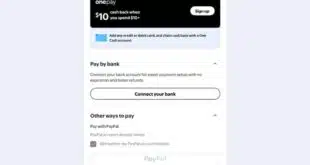The biller-direct channel of paperless bill payment is growing faster than the so-called consolidator channel that consists largely of bank and credit-union Web sites, though not by much, a new report from Aite Group LLC says. The report also says average transaction sizes are increasing and that the biller-direct vendor market remains highly fragmented. Aite Group research director Gwenn Bézard analyzed the 10 leading bill-pay vendors and obtained detailed data from seven to make market estimates for 2006 into 2009. Bézard concluded that the biller-direct channel accounted for 69% of electronic bill payments in 2009 and consolidator sites 31%. That's not much different from the 68% and 32% shares held by biller-direct and consolidator channels in 2006. Consolidator sites had an estimated 13.5% compound annual growth rate (CAGR) from 2006-09 versus an 11.2% combined CAGR for biller-direct sites and their closely related but slow-growing industry cousins, walk-in bill-pay outlets. Without the walk-in sector, the biller-direct channel had a 14.3% CAGR over the period, according to Boston-based Aite Group. Transactions processed by vendors serving direct billers grew from 3 billion in 2006 to an estimated 4.5 billion in 2009, Aite estimates. When the walk-in bill-pay market is added, a market generating about 1 billion payments a year, total transactions grew from 4 billion in 2006 to 5.5 billion last year. Consolidator bill-pay transactions grew from 1.4 billion to 2.0 billion. The higher biller-direct growth rate is probably a function of billers' interest in reducing the cost of processing paper payments and retrenchments by banks in promoting bill pay as they put out recession-caused fires such as replenishing depleted capital and cutting loan losses, according to Bézard. “Over the past few years banks have diminished their amount of marketing,” he says. “I think on the other hand you have seen a lot of billers … promoting bill-payment.” He adds that despite the high cost of credit and debit card interchange, encouraging consumers to charge bills to their cards helps billers reduce bounced-check costs as well as paper processing. Fiserv Inc. is the No. 1 biller direct/walk-in transaction processor, handling an estimated 324 million payments last year. Fiserv bought the leading bill-pay processor and technology provider, CheckFree Corp., in December 2007. No. 2 in 2009 was The Western Union Co., 277 million transactions. Next were Kubra Data Transfer, 125 million transactions (including some bill-presentment volume); Online Resources Corp., 61 million; Fidelity National Information Services Inc., 43 million; The Bank of New York Mellon Corp., 38 million; JPMorgan Chase & Co., 26 million; MoneyGram International Inc., 20 million; Tier Technologies Inc., 17 million, and IPP of America Inc., 14 million. These 10 leading vendors grew faster than the overall market through acquisitions or growth at the expense of weaker firms, Aite says. But Fiserv, the biggest, has just a 5.9% share of the biller-direct/walk-in bill-pay market and No. 2 Western Union, 5.1%. As a group, the Top 10 accounted for only 17.3% of the market in 2009. While up from 15.5% in 2006, more than 80% of biller-direct payments are still processed on in-house systems or licensed software from Fiserv, Oracle, Alacriti, or BNY Mellon, Aite says. Consumers made 69% of biller-direct/walk-in bill payments via Web sites in the first half of 2009. Call centers and interactive voice-response systems accounted for 22% of payments; walk-in centers 9%, and kiosks or ATMs, 0.1%. The Web's share of payments last year was the same as in 2006. Phone systems gained from 17% in 2006 at the expense of walk-in payments, which held a 14% share that year. The weighted average face amount of biller-direct and walk-in bill payments rose 21% from $137 in 2006 to $166 in 2009, Aite estimates. That's a function of consumers getting more comfortable with making bigger transactions such as rent and mortgage payments after testing the waters with smaller ones as phone bills, Bézard says. Some 69% of biller-direct transactions came through Web or phone channels and had no fee in 2009, Aite says. In 2006, 66% of transactions through those channels had no fee.
Check Also
Branded Checkout Helps Buoy PayPal As It Eyes Crypto And BNPL
PayPal Holdings Inc. recorded a tepid 1% growth rate in revenue in the first quarter, …





